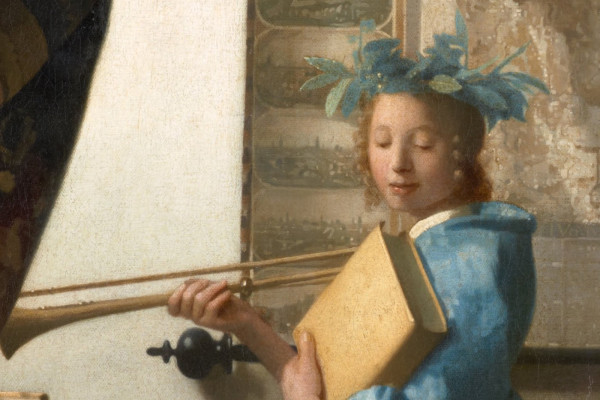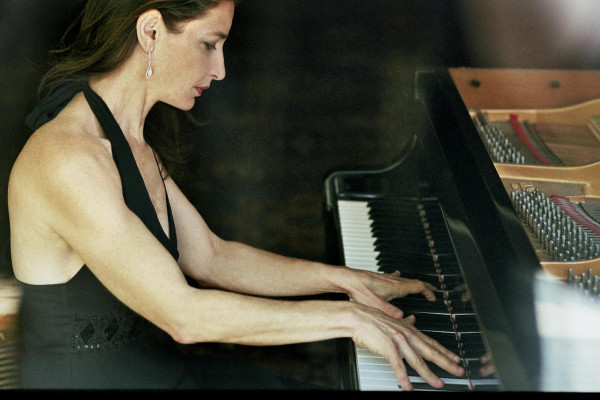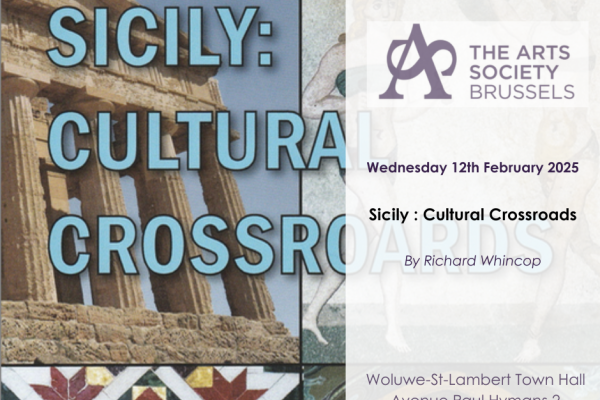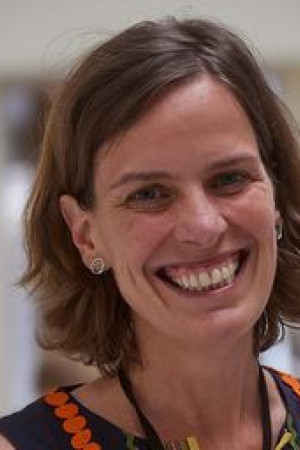
Isabel Vermote is an Historian and Art Historian. She studied at the universities of Namur, Leuven and Brussels. She currently works for the Education Department of the Royal Museum of Fine Arts of Belgium and is also a lecturer at the Bozar, ING, Belfius and for some private collections.
The study of symbols – be they animals, artifacts, plants, geometric shapes, or gestures – is an essential aspect of interpreting art and part of the iconographic analysis. Reading symbols requires background knowledge of various fields: history, mythology, religion, history of art...
The use of symbolic visual language is of all times. Bruegel painted various symbols to furnish his works with deeper meanings. More recently, Jean-Michel Basquiat developed a rich vocabulary of symbolism that mixed private and public meanings. Some concrete examples show us how the signification and interpretation of symbols has changed throughout time.
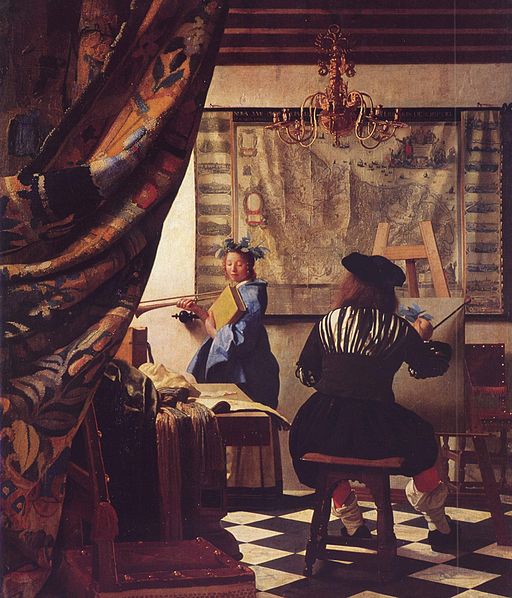
Isabel Vermote, our speaker, started her presentation citing Goethe “One only sees what he knows and understands”.
She went on to explain why symbols are the key to understanding. The study of symbols – be they animals, artefacts, plants, geometric shapes or gestures – is an essential aspect of interpreting art and part of iconographic analysis. Reading symbols requires background knowledge of various fields: history, mythology, religion, history of art.
The use of symbolic language existed in all times. Pieter Brueghel painted various symbols to furnish his works with deeper meanings. In our times Jean- Michel Basquiat developed a rich vocabulary of symbols that mixed private and public meanings. For these reasons, she said, we should focus our attention on the symbols in art pieces, particularly in paintings. Then, the slide presentation accompanying her lecture began. On the first slide there was a painting by Johannes Vermeer of 1666 that depicts a pretty young woman wearing a wreath on her head. In her hands she holds a book and a trumpet. Images can tell the story, but one needs to look at them and interpret them. The painting is called ‘The Allegory of the Art of Painting.’ Next to this slide there is another one where the same young woman personifies Clio, the muse of history and the inspiration for the painter. If we look at the background of the painting, we notice the map of Holland divided in two parts. That was the time of the Munster Treaty. The artist did not remain indifferent to the historic events of his time.
Recently after a long period of restoration the most famous Belgian painting ‘Mystic Lamb’ has returned to Ghent’s Saint Baafs cathedral. The eyes of the Mystic Lamb have acquired human profoundness and it is not easy to look into them, because the animal’s gaze discloses that he knows his fate. The Sacred Lamb is bleeding, his blood pours into a sacred vessel. The next slide, Francisco Zurbaran’s ‘Agnus Dei’ from the Prado Museum, also depicts a lamb offering himself for Crucifixion like Jesus. Symbols change with the times. In a painting by Euterio Pagliani (1876), we see a young coquettish woman playing with a fan. She sends signals around the room, coded messages like “Do you love me?” or ‘’I am engaged”, or “Follow me”.

The painting by Pieter Breughel the Elder entitled ‘The Fall of the Rebel Angels’ represents a very dramatic episode from the Old Testament. Among the angels, there is Saint Michael from the Apocalypse fighting with Lucifer. Here the painter combined biblical times with the ancient. He lived in the period after America was discovered and rare things from the new continent found their way to the art of the period, such as the butterflies or strange types of fish. Helmets on the heads of angels show the influence of the Ottoman Empire, a rising empire threatening Europe.
When we turn to the times closer to us, we notice that the artists continue using symbols, finding in them comfort and a reference to their own existence. Let’s look at the art pieces of the young black painter from New York, Jean-Michel Basquiat. During his very short life (1960-1988) he did graffiti around New York City, painting crowns and figures of the Red Warrior in acrylic and oil sticks. Under the influence of Communist propaganda, he also did drawings of the hammer and sickle.
ICONIC IMAGES IN WESTERN ART
Saint Sebastian is among the most famous subjects, painted many times by many artists from classic times to the modern day. He was a Roman soldier (256 A.D.-288 A.D.), then became a Christian and was executed. Albrecht Dürer depicted Saint Sebastian tied to a tree. El Greco shows him with only one arrow flying directly to his heart. Eugène Delacroix presented Saint Sebastian lying and dying, with Sainte Irene bending over him trying to save him.
Later the figure of Saint Sebastian was widely used by homosexual artists to show a similarity between their fate and his. In 1962, Carl Fischer depicted the famous American boxer Muhamad Ali as a martyr similar to Saint Sebastian. In the new millennium, the sculptor Michael Richards showed the body of Saint Sebastian being attacked by airplanes. This was a sculpture in bronze. In an incredible premonition, Richards was killed during the attacks of 9/11.
Eggs are another iconic image of iconography. The egg is a symbol of purity. In the Renaissance period, the image was widely used. Piero Della Francesca’s painting ‘Madonna of the Eggs’ (1472) shows an egg hanging from the ceiling of the church. Other artists like Giovanni Bellini and Fra Angelico did similar works. In our times, the Romanian sculptor Constantin Brancusi ISG Newsletter October 2022 21 September 2022 www.isgbrussels.be Page 7 of 19 created a big marble egg and named it ‘The Creation of the World’. Marcel Broodthaers’s sculpture ‘Little cage with eggs’ executed in bronze gives us the feeling that the eggs are fragile and need to be protected. Peter Carl Faberge’s splendid eggs in precious materials were created in his atelier in Saint Petersburg at the end of the 19th century for the Russian imperial family. All together they were 69 eggs.
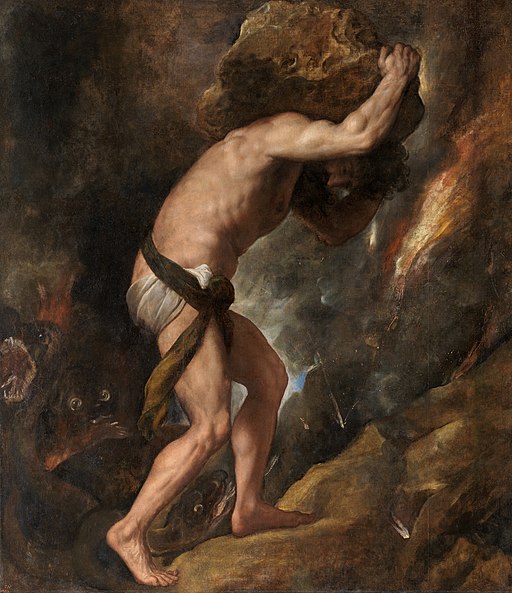
Among Iconic images an important role is played by Sisyphus. The myth of Sisyphus was used by Titian in his canvas by the same name dated 1548-1549. It is now in the Prado Museum in Madrid. The Belgian artist Yan Fabre also used the Myth of Sisyphus for a subject. In 2012 he carved in Carrara marble three strange figures who are trying to push an enormous object.
Isabel cited a phrase from Albert Camus “Life is absurd and still we have to continue”. The author also refers to the myth of Sisyphus.
Equestrian sculpture is a symbol of power. But when we strip the horseman of his attributes like the helmet and armour, he loses all his significance and turns into a commonplace man. The sculpture of Marcus Aurelius in Padua made by Donatello in 1453 is an image of power. Similar to Louis XIV in Versailles.
In 2018, The sculptor Nina Beier created a monument in bronze which is installed in Nieuwpoort. There are four horsemen stripped of all their attributes of power and they look fragile. The statue of Leopold II in Brussels has been smeared in red paint. Is it the image of our time?
